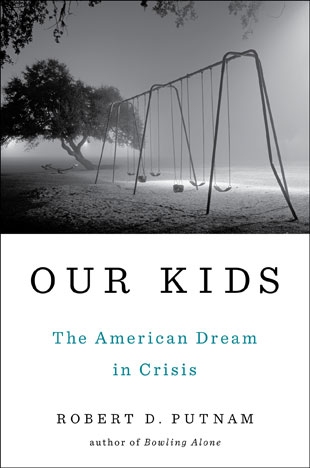Welcome to an America where the class divide between the rich and the poor is growing by leaps and bounds. The author of this revealing book is Robert D. Putnam who made quite a large splash with Bowling Alone, where he described the decline of social capital in the United States. He is the Malkin Professor of Public Policy at Harvard University and a member of the National Academy of Sciences.
Starting off with an account of members of his 1950 high school class in Port Clinton, Ohio, Putnam shows how this privileged group had high expectations of what they could do and most of them achieved a higher standard of living than their parents. He then notes that in our economically uncertain times, the haves are gaining even more ground than in the past when compared with the sons and daughters of middle-class and poor families.
Educated families are richer (two incomes), more stable, and nurturing. Upper-class youth have better educations, play more sports, and go to church more often. Worst of all, the gap between the rich and poor kids in finishing college is 51 percentage points. All of these advantages enable children at the top to make the most out of changes in family life, neighborhoods, and schools.
Putnam hammers his main thesis hard: this growing inequality spells disaster for children raised in low-income families. Putnam's book, along with others we have recently recommended, illustrates just how debilitating and destructive curtailed economic opportunity has been for the have-nots in the United States.
